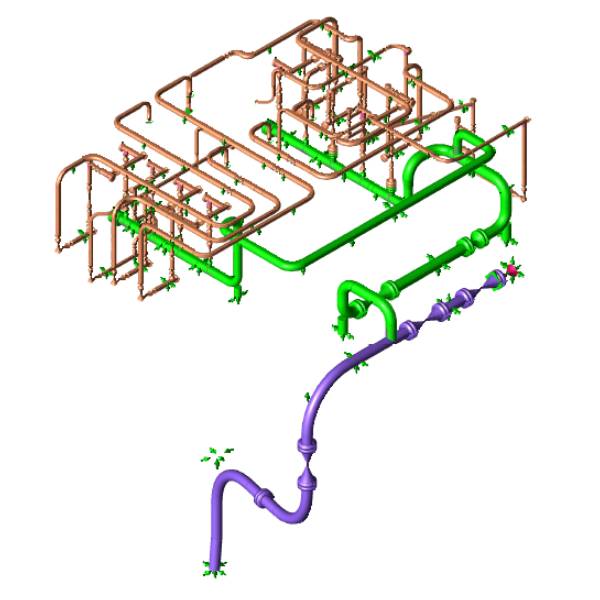Piping Stress Analysis
In order to properly design a piping system, the engineer must understand both a system's behavior under potential loadings, as well as the regulatory requirements imposed upon it by the governing codes.

A system's behavior can be quantified through the aggregate values of numerous physical parameters, such as accelerations, velocities, displacements, internal forces and moments, stresses, and external reactions developed under applied loads. Allowable values for each of these parameters are set after review of the appropriate failure criteria for the system. System response and failure criteria are dependent on the type of loadings, which can be classified by various distinctions, such as primary vs. secondary, sustained vs. occasional, or static vs. dynamic.
The ASME/ANSIB31 piping codes are the result of approximately 8 decades of work by the American Society of Mechanical Engineers and the American National Standards Institute (formerly American Standards Association) aimed at the codification of design and engineering standards for piping systems. The B31 pressure piping codes (and their successors, such as the ASME Boiler and Pressure Vessel Section III nuclear piping codes) prescribe minimum design, materials, fabrication, assembly, erection, test, and inspection requirements for piping systems intended for use in power, petrochemical/refinery, fuel gas, gas transmission, and nuclear applications.
Why do we Perform Pipe Stress Analysis?
We perform Stress Analysis in order to:
- Keep stresses in the pipe and fittings within code allowable levels
- Keep nozzle loadings on attached equipment within allowables of manufacturers or recognized standards (NEMA SM23, API 610, API 617, etc.)
- Keep vessel stresses at piping connections within ASME Section VIII allowable levels
- Calculate design loads for sizing supports and restraints
- Determine piping displacements for interference checks
- Solve dynamic problems in piping, such as those due to mechanical vibration, acoustic vibration, fluid hammer, pulsation, transient flow, and relief valve discharge
- Help optimize piping design
Core Competencies:


